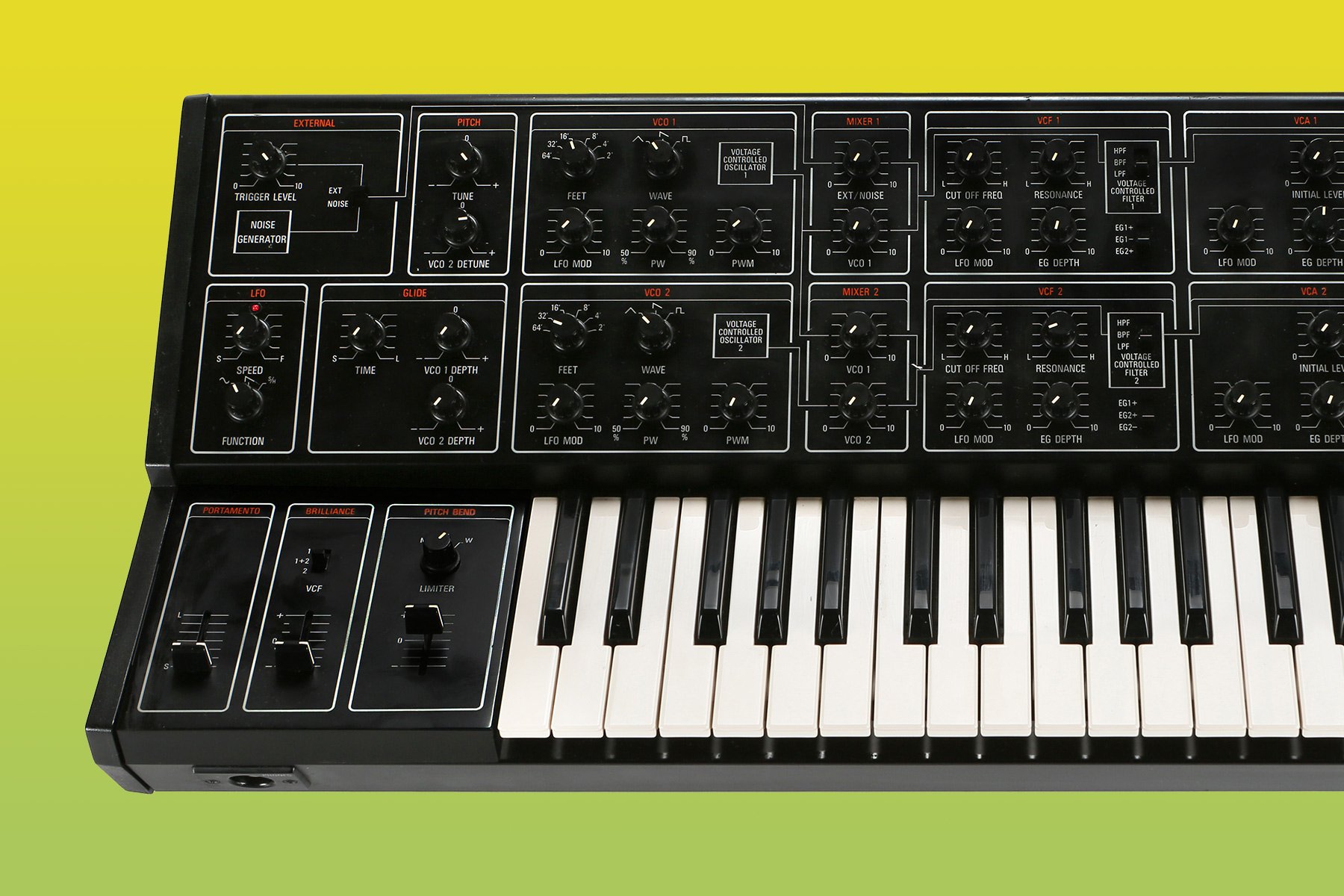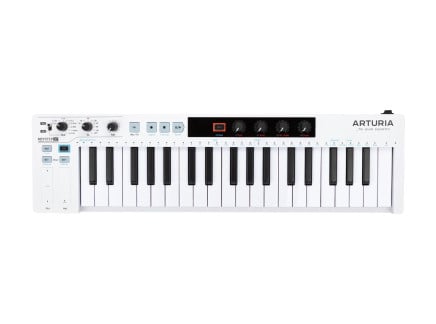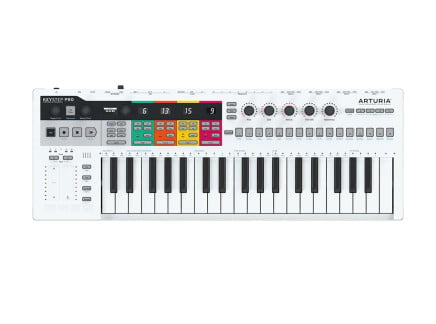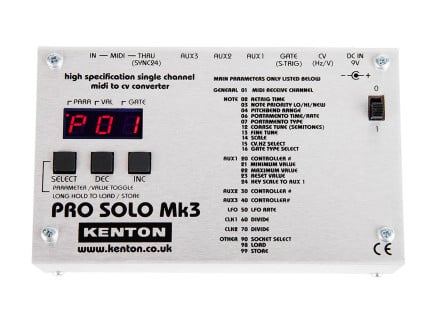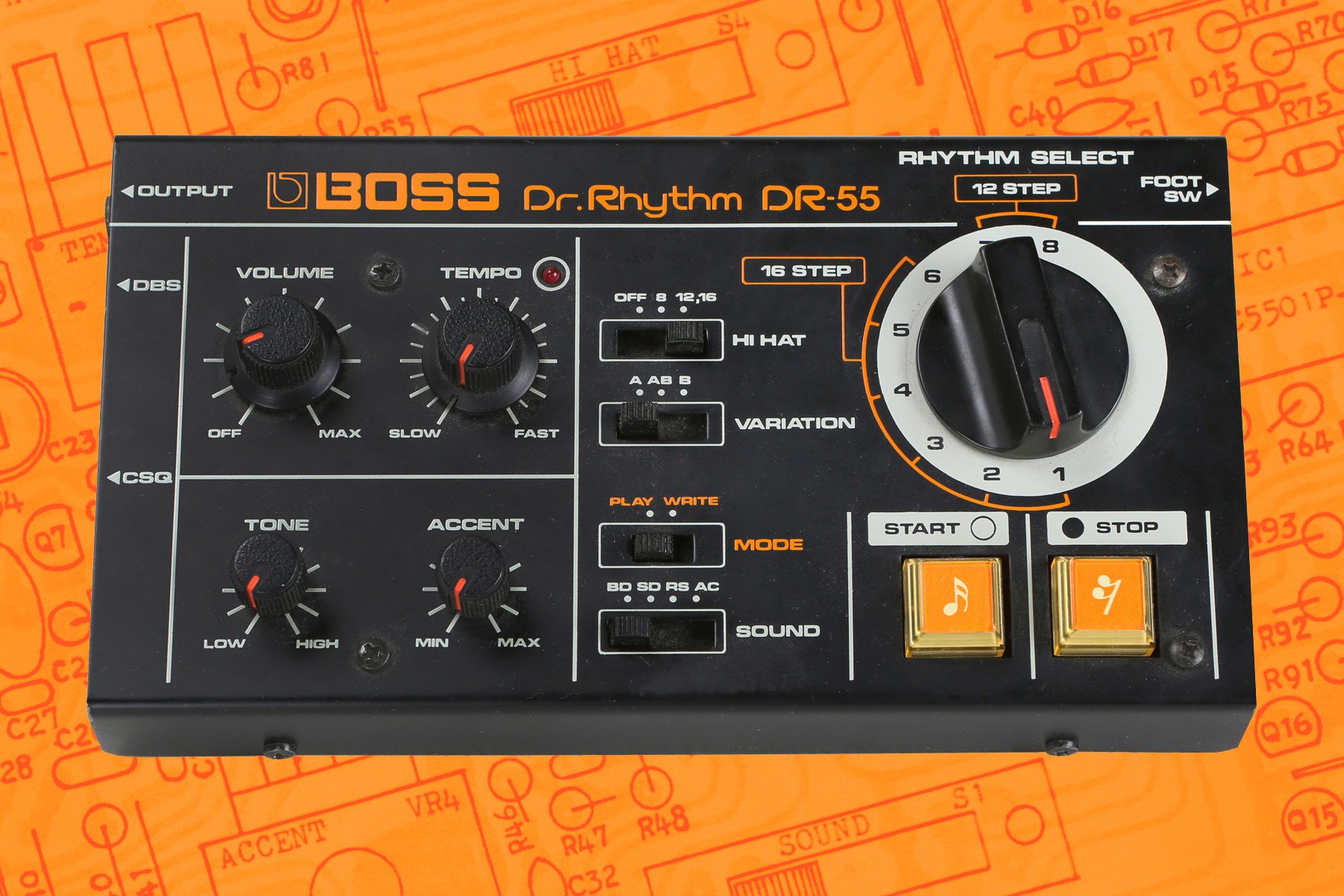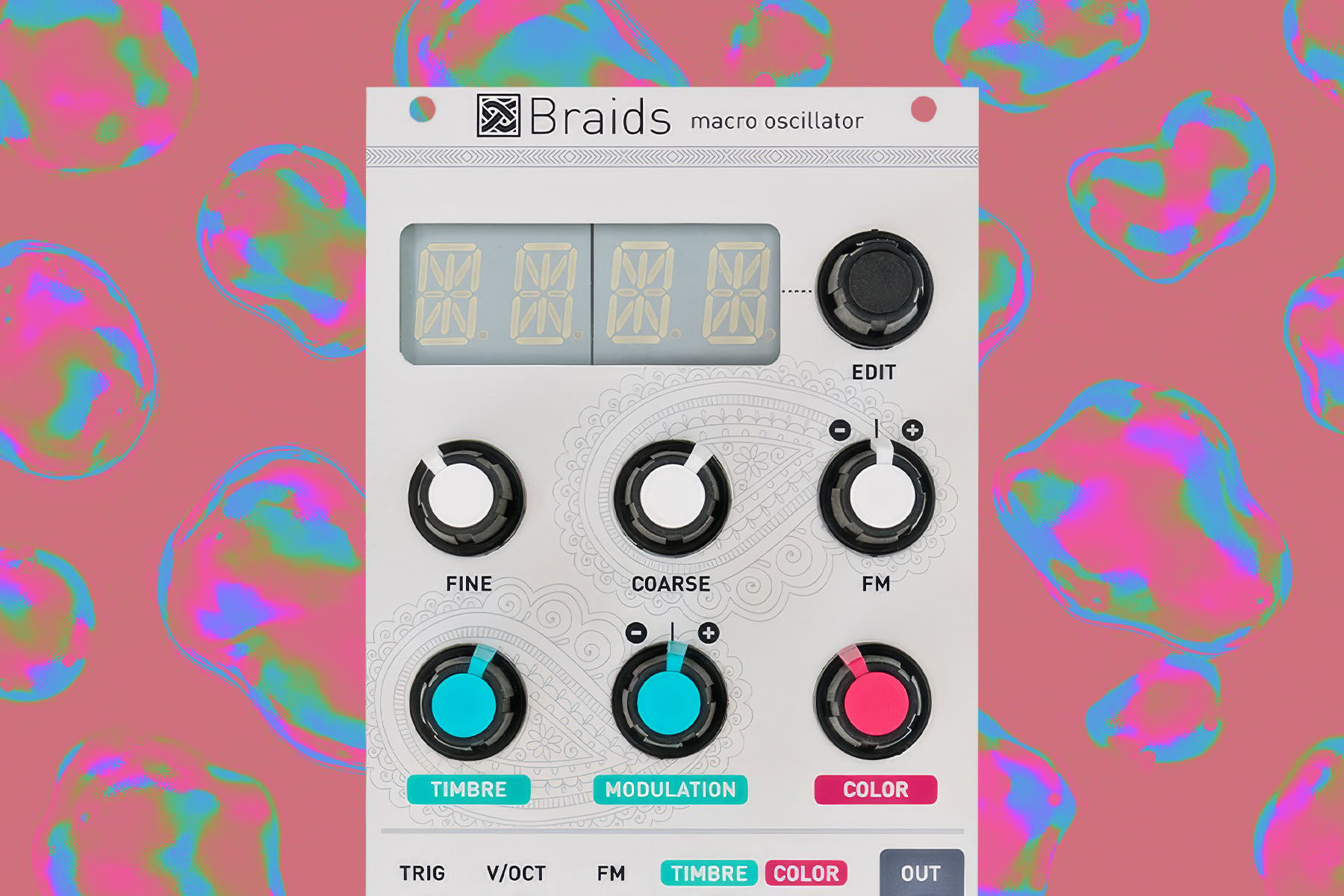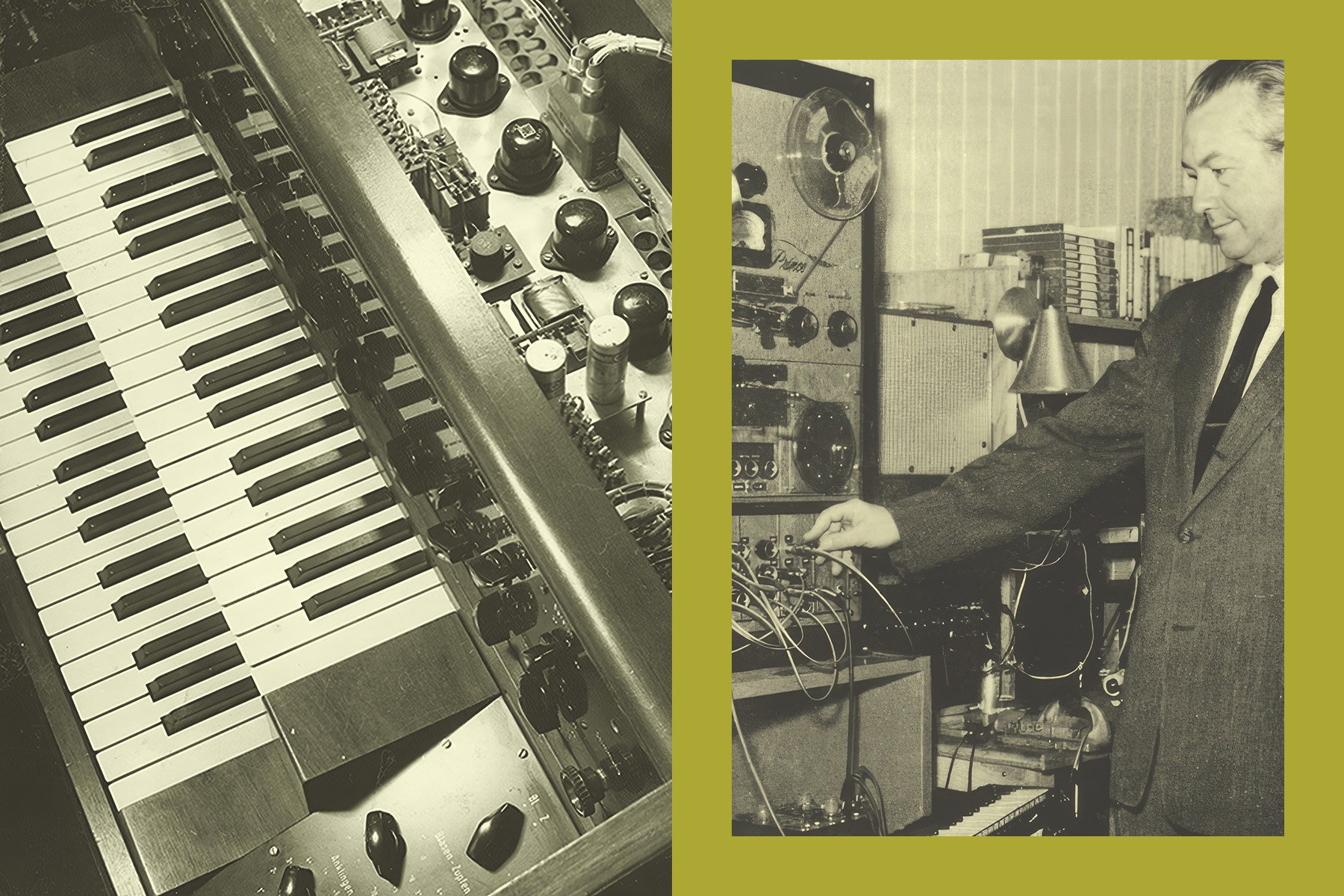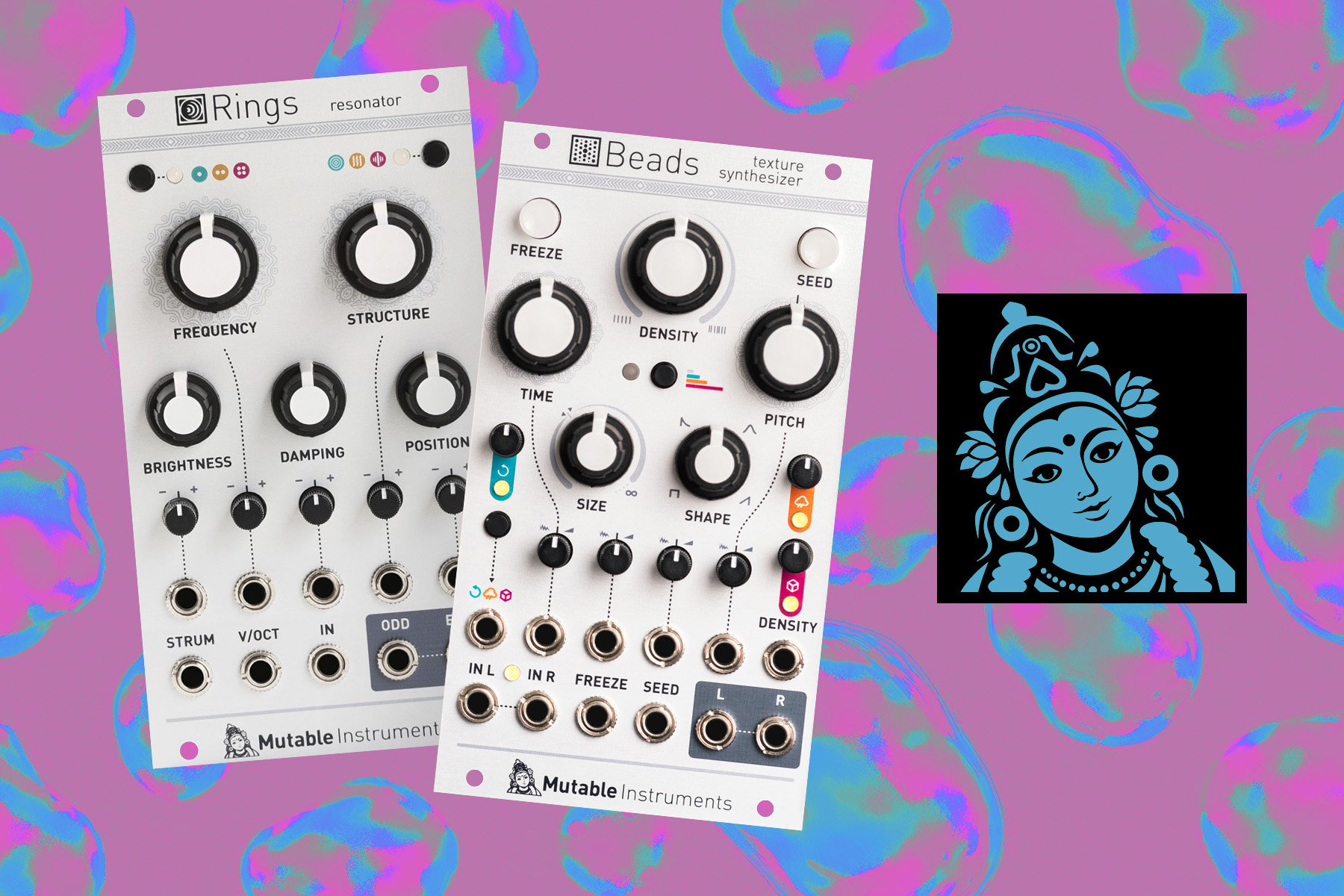The core functionality of the synthesizers that we know and love today is based on control voltage. Among other things, electronic signals determine when and for how long gates remain open, envelopes are triggered, and the pitch of the notes that should be played. This concept is something that becomes more obvious when you dive into the world of modular gear, but even if you haven’t, you have probably already come across the term ‘volt per octave’, commonly marked as 1V/Oct.
In practice, 1V/Oct refers to a particular tuning standard of the instrument or sequencer in question, which is used to determine what pitch corresponds to what voltage, with the notes of an octave spread out per volt. This means that if you increase the voltage from 0V to 1V, the corresponding octave of the note will increase by one—e.g. from a starting point of C3, rising to C4.
If every manufacturer was to implement a different approach to tuning, it would make interoperability between systems far more difficult. In practical terms, this would mean that playing the keys of a piano-style controller that was connected up to a sound module using CV would not necessarily produce the expected notes. Obviously, this is kind of an important element of producing music—unless you’re deliberately searching for the atonal and unpredictable (which many may accuse my own releases of being).
None other than Bob Moog himself popularized the 1V/Oct standard, which has since gone on to become the most commonly accepted in the industry. However, that wasn’t always the case, and there have been competing approaches which still persist in various forms to this day. One example is Hertz per volt (Hz/V), utilized by manufacturers including Korg and Yamaha. In contrast to the exponential nature of 1V/Oct, Hz/V is linear in nature—in some ways making it both cheaper and more stable. However, the resulting scale does not map in as straightforward or clear a manner to the musical notes in a way that users could easily understand. Another alternative approach can be found in Buchla synthesizers, some of which track at 1.2V/Oct. The reasoning behind this being to allow a change in pitch of a single semitone per 0.1v difference. With twelve semitones in the Western musical scale, this equates to 1.2V per octave. (Ed.: Of course, some other Buchla instruments used still different standards—a discussion for another day.)
Practical Scenarios
As interesting as all of this is, most people (fortunately) won’t ever need to think about the particular tuning technicalities of their electronic instruments. This is because 1V/oct has been adopted as the general standard for the majority of contemporary modular and semi-modular devices—where it (arguably) matters most, due to the "exposed" nature of control voltage. By the same token, if you are only ever playing with self-contained synthesizers, then all of the relevant operations will happen under-the-hood. Out of sight, out of mind. No need to worry about how or what’s going on to that level.
However, as enterprising individuals and budding artists begin to experiment by combining different bits of gear, they may well discover that there is a fundamental mis-match with their selections. Specifically this will be most noticeable when it comes to pitch, for obvious reasons. Hooking up a 1V/Oct sequencer to a synth that operates on Hz/V is not going to produce the results that one would necessarily expect or desire. In particular, this seems to come up as a topic fairly regularly in relation to the MS-20. Its resurrection in recent years—both in the form of the MS-20 Mini and also the K2 clone from Behringer—have meant that it is arguably one of the most well-known synths in production today which operate on the Hz/V system. As such, the lack of direct compatibility with it and other modular gear is something that catches the unsuspecting out on a regular basis. The lure of all those patch points on the classic synth are just begging to be connected up to a Eurorack, but the difference in standards makes it a bit trickier than it may appear to be on the surface.
Getting two incompatible systems to talk to one other properly through the use of CV necessitates the deployment of some kind of conversion box. There are standalone devices available, but the most readily accessible options are found in Eurorack form. Expert Sleepers Eurorack Swiss army knife Disting is the most common, but a special mention has to go to Industrial Electronics English Tear, and the no-frills, budget-friendly alternatives from Ladik.
Sequencers
Another scenario in which pitch scaling becomes a relevant concern in a practical sense is when choosing a sequencer, as you will obviously want to ensure that your devices of choice can communicate appropriately. There wouldn’t be much point in spending the time carefully crafting some especially euphonic melodic line in 1V/Oct if your synth is designed to track pitch in Hz/V after all. Luckily, there are many controllers out there now that support multiple standards, and allow you to switch these at the touch of a button (well, usually the selection of a relevant menu option, to be more accurate).
Korg’s dinky little SQ-1 is one such affordable option, with CV outputs that can be set to 1V/Oct or Hz/V. If you are looking for something more in-depth, then it might be worth exploring the Torso T-1, which is a really interesting 16 track algorithmic sequencer with a dizzying range of features, that can also output voltage at either scale. Handy for connecting up to modular systems of various types.
Options that support 1.2V/Oct in addition to the more popular standards are a bit less common, but still readily available. These include the polyphonic step-sequencing SQ-64 from Korg, and also the KeyStep Pro from Arturia, which is a bit of a monster. It boasts built-in sequencers for both drum and melodic tracks, each with dedicated control voltage outputs - and of course, a keybed. Another alternative would be the MicroFreak (also from Arturia), with its charming touch capacitive control. I have personally used all of these apart from the SQ-64, and appreciate the versatility that they offer in that regard—it’s exactly what you would expect from a modern-day controller. The key thing to remember is that if you are looking for such a thing, check first that it will support the particular tuning standard for the instruments that you own.
MIDI to CV Conversion
You might think that you can just bypass all of this nonsense by using MIDI, and to some extent that would be correct. If both your controller and instrument support MIDI (in whatever form that might be), then control voltage doesn’t really come into play at all. However, if you are going to be converting from MIDI to CV at any stage, then the output voltage again becomes a necessary consideration.
Fortunately, there are a number of MIDI to CV devices out there that support different pitch scaling standards. In Euro-land, my personal go-to module of choice for all kinds of MIDI conversion duties is the Shuttle Control from Endorphin.es, which has a whole array of possible configurations, as well as multiple outputs. If you want a standalone box, then Kenton offers a single channel converter in the form of the Pro Solo Mk3, which is enough for one voice. It is also possible that you already have one of these lying about and didn’t realise, as Korg’s SQ-1 can be configured to act as a MIDI to CV box—which (for me at least) drastically increases its practical value.
If you find yourself in the situation where you want to go in the other direction, converting CV to MIDI (which will probably be a far less common use case), then there are adapters out there which can do just that as well. Kenton’s Pro CV to MIDI Converter would be a relatively inexpensive option, and of course there are Eurorack modules available, like Befaco’s CV Thing.
Conclusions
If all of this is making your head spin, then you don’t need to worry, as the chances of you encountering real-world difficulties due to pitch scaling mis-matches are relatively slim—at least if you are largely playing around with self-contained instruments, or "standard" Eurorack gear. This is only going to be a challenge once you start experimenting with more unusual bits of equipment, or want to try and integrate something like the MS-20 with other bits of modular.
Even in those cases, it’s simply a matter of picking up an appropriate converter. Given the organic way in which the world of electronic music has evolved over the decades, we should probably count our blessings that we have any kind of generally accepted standard at all.

